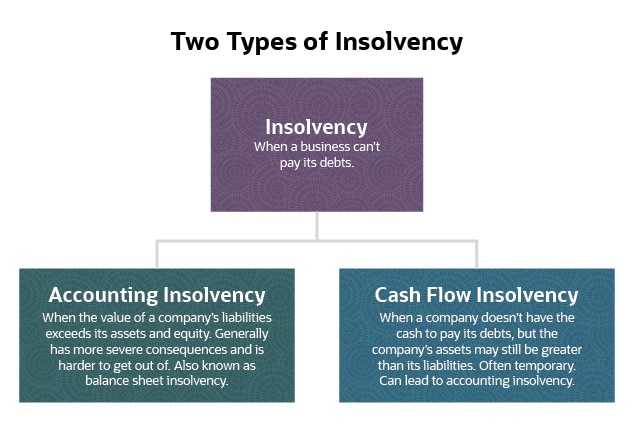The 2-Minute Rule for Insolvency Practitioner
The 2-Minute Rule for Insolvency Practitioner
Blog Article
A Biased View of Insolvency Practitioner
Table of ContentsThe Single Strategy To Use For Insolvency PractitionerInsolvency Practitioner - The FactsMore About Insolvency PractitionerThe 25-Second Trick For Insolvency PractitionerOur Insolvency Practitioner IdeasGetting My Insolvency Practitioner To WorkSome Known Incorrect Statements About Insolvency Practitioner
Insurance policy is checked and regulated by state insurance coverage departments, and among their key goals is shielding insurance holders from the danger of a business in economic distress. When a company enters a period of financial difficulty and is not able to fulfill its obligations, the insurance coverage commissioner in the firm's home state starts a processdictated by the regulations of the statewhereby initiatives are made to aid the firm restore its economic footing.If it is determined that the business can not be fixed up, the business is proclaimed insolvent, and the commissioner will certainly ask the state court to order the liquidation of the business. The insurance coverage commissioner, either selected by the governor or elected, heads the state insurance coverage division and displays and regulates insurance policy activity within the state.
[Back] By obtaining control of a firm, the commissioner (or the insurance division) is, by legislation, the rehabilitator or liquidator of the business. In this capacity, the commissioner or department takes control of the company's procedures. Instead of do so directly, the commissioner might maintain an unique replacement receiver to manage the business's activities.
5 Simple Techniques For Insolvency Practitioner
The receiver looks after a bookkeeping of the company's possessions and obligations and provides the estate of the business. In doing so, the receiver looks for to optimize the business's assets, move them to money, and after that distribute that money to lenders having legitimate claims versus the insurance provider in accordance with payment top priorities defined by state legislation (in all states, insurance policy holders are top priority complaintants whose insurance claims are paid prior to those of general creditors).
All insurance coverage business (with restricted exceptions) licensed to market life or medical insurance or annuities in a state have to be participants of that state's warranty organization. The guaranty organization coordinates with the commissioner and the receiver in pre-liquidation preparation. Once the liquidation is gotten, the warranty organization provides protection to the firm's insurance holders who are state homeowners (up to the levels specified by state lawssee listed below; any kind of benefit quantities above the guaranty asociation advantage levels become insurance claims against the business's staying possessions).
The above coverage levels apply separately for each bankrupt insurance provider. [Back] When an insurance company fails and there is a shortage of funds required to fulfill the responsibilities to insurance policy holders, state guaranty associations are triggered. Warranty organizations have 2 main sources of financing when offering protection to policyholders. First, warranty associations have subrogation rights to a proportionate share of the assets continuing to be in the failed insurer.
The Only Guide for Insolvency Practitioner

NOLHGA develops a task force of depictive guaranty associations to collaborate with the insurance coverage commissioner to develop a strategy to protect insurance holders. For additional information on NOLHGA's role at the same time, see "What Is NOLHGA?" and "The Safeguard at Job." [Back]
You are here: Insolvency is when a company or individual can't pay financial obligations when they are due. There are a number of choices offered to a bankrupt firm or individual: ASIC manages firms, it does not manage personal insolvency treatments. To learn more concerning personal bankruptcy and personal insolvency agreements, look what i found visit the Australian Financial Safety and security Authority web site.
The Of Insolvency Practitioner
Anticipating defense by helping you pick the best clients and the appropriate markets to avoid Get More Info poor financial obligation to begin with, many thanks to severe financial analysis - Insolvency Practitioner. In-depth market intelligence, giving you with 360-degree presence on business sectors and putting at risk troubles. It would certainly be a simplification to believe a trade credit rating insurance starts and finishes with costs and pay-outs
This can take place for a variety of factors, including poor economic administration, unforeseen costs, or an adjustment in the marketplace. If a business is financially troubled, it might be required to shut down or liquidate possessions to pay lenders. This can have a significant effect on business, staff members, and shareholders.
It can cause task losses, property sales, and even insolvency. It is important to understand how company bankruptcy works and just how it can influence your service. Why does a company become part of bankruptcy? There are a number of reasons that a company may get in into insolvency. One of the most usual reason is that the company is unable to pay its financial obligations as they fall due.
How Insolvency Practitioner can Save You Time, Stress, and Money.
Other reasons for bankruptcy consist of fraudulence, mismanagement, and unanticipated costs. Insolvency can likewise lead to task losses and the closure of organizations.
This can have serious effects for the firm, its stakeholders, creditors Bonuses and the economy. The business may be required to offer possessions, lay off staff or perhaps close down. This can have a ripple effect on the local neighborhood and the economic climate in its entirety. Lenders may be left out of pocket and the firm's investors might see their investment vanish.
This can take place for a variety of factors, including poor financial monitoring, unanticipated prices, or a change on the market. If a business is insolvent, it might be required to shut down or liquidate properties to pay creditors. This can have a major effect on business, staff members, and shareholders.
All about Insolvency Practitioner
Why does a company enter right into bankruptcy? There are a number of factors why a company may get in into bankruptcy.
Various other reasons for insolvency consist of scams, mismanagement, and unanticipated expenses. Insolvency Practitioner. When a business comes to be insolvent, its possessions are made use of to repay its financial obligations. This can have a major effect on business, as it might no longer be able to proceed operating. Bankruptcy can likewise lead to job losses and the closure of organizations.
The Main Principles Of Insolvency Practitioner

Report this page